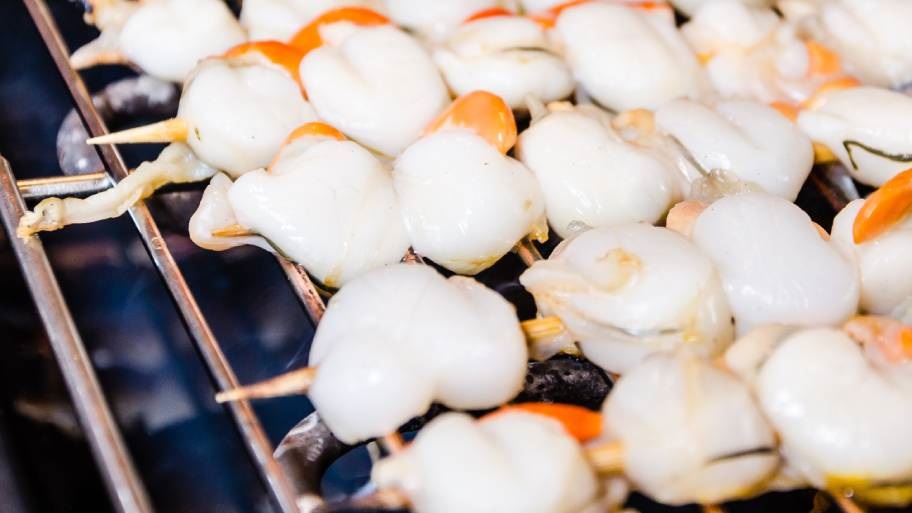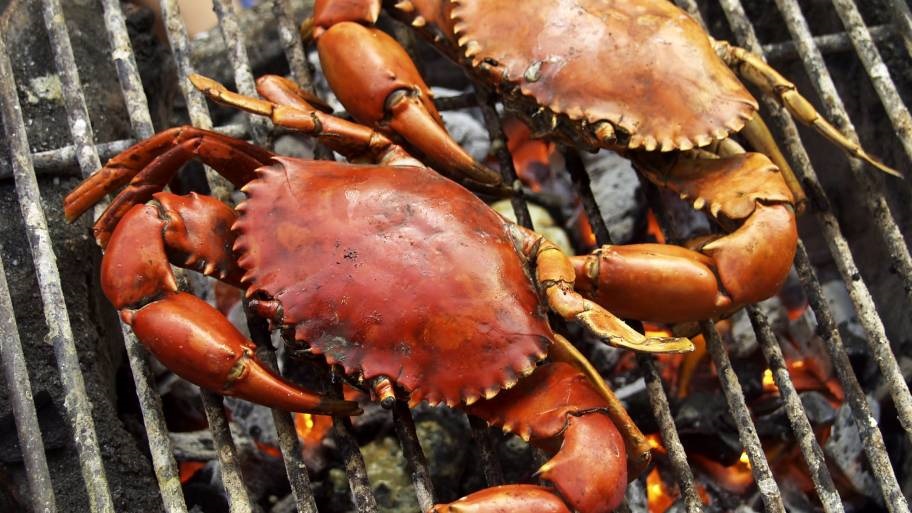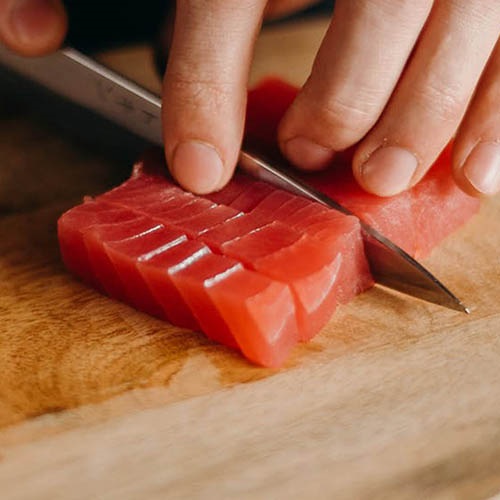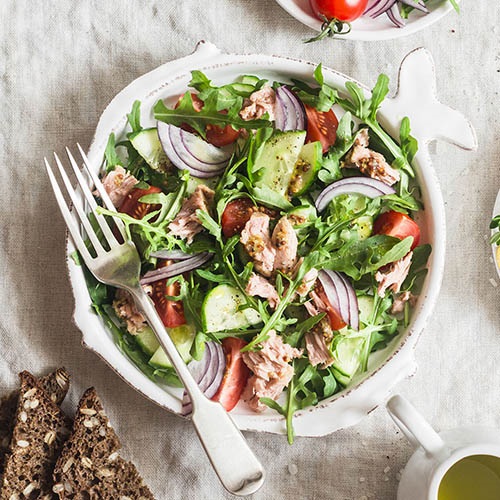Cooking shellfish over hot coals adds a whole new dimension to seafood.
I used to think that shellfish like lobster, scallops and crab were best eaten only at well-reviewed waterfront restaurants. I imagined that only their chefs held the secret to a plate of seafood that was sweet, intense, and slightly charred. But I was missing a trick. On a trip to Iceland, I watched a Michelin-starred chef named Aggi Sverrisson cook sea-fresh lobster tails on the white coals of a beach barbecue. Brushed with lemon butter and wild kelp flakes not only was it unforgettably delicious, it looked feasible for mere mortals.
And so I learnt that with a little know-how shellfish is just as easy, if not easier, to cook than fish on a back garden barbecue. In the case of lobster, crab and shrimp their built-in shell protects them from intense heat and prevents them from falling apart. While squid and scallops have hardy muscular textures that withstand heat well. Follow a few simple steps and the results will be sweet, smokey and sensational. What’s more, if you grill these premium seafoods at home, you can spend what you don’t shell out at a restaurant on a great bottle of white wine – mine’s an Albariño!
Below we’ve highlighted the best sustainable shellfish available in the UK, so you can enjoy a cookout with family and friends knowing that you’re not depleting the ocean’s fish stocks.
Lobster
Extracting the succulent, pearl-white meat from the claw of a lobster has to be one of the all-time great gourmet experiences. There are a number of ways to cook a lobster, but finishing it on the grill gives it a sweet, smoky flavour. Lobster tails are excellent on the grill and a big favourite along the eastern seaboard of North America, where lobstering is considered a way of life.
Most MSC labelled sustainably caught lobster in the UK is from Canada and is mainly available as a frozen product; closer to home we do also have a more local MSC certified fishery in Jersey. Follow instructions on the packaging to fully defrost the lobster. Then season and brush the fresh lobster meat with butter. Place the tails or halved whole lobsters on a hot grill flesh-side down. Cook for 4 to 5 minutes on each side, brushing with butter as you go. Cover the grill to keep the heat in; this speeds up the cooking time, which prevents the shellfish from becoming tough. If you don’t have a cover, you can use an upturned saucepan. Pre-cooked lobster can easily be reheated on the grill, too. Brush with butter or oil and heat for around 2 to 3 minutes until hot. If it’s still in the shell, place it shell-side down on the grill.
Seafood restaurateur and MSC Ocean Ambassador Mitch Tonks gets really fired up by barbecued shellfish: "I love cooking fish over fire, it just feels so natural for seafood, but it has to be charcoal. The lick of a fire goes a long way with lobster, prawns and scallops. I like to split lobsters in half just before cooking, rub the flesh with olive oil and salt and then grill them flesh-side down for just a few minutes before turning them over and covering them with a metal bowl turned upside down. This gives you another opportunity to add flavour by adding a bunch or two of hardy herbs to the fire like bay, rosemary or thyme. As the herbs burn, the fragrant smoke gets caught in the bowl and adds it magic. When the lobsters are cooked just douse them in melted butter and lemon and tuck in."
Flavoured butters are a quick-win to raise the umami stakes. Pack some sizzling hot, butter-brushed lobster fresh off the grill into a soft hot dog bun and you have a lobster roll, a coastal shack staple in Canada and the northeastern US states. Alternatively, serve the chunky bits of charred lobster in sliders with lemon and dill aioli or stuff tacos with grilled lobster, chipotle mayo, homemade slaw and red onion pickle.

© shutterstock / Joshua Resnick
Scallops
Scallops are another fancy ingredient that benefit from a boost on the backyard barbecue. Quick and simple to cook, the results are impressive: golden, grill striped cushions of seafood goodness.
Scallops need to be as dry and cold as possible before cooking. They tend to act like a sponge if you marinate them and take on too much moisture, so it’s best to use dry seasoning blends or a last-minute glaze (try balsamic; ginger, lime and soy or homemade red hot buffalo sauce). Oil the grate to prevent sticking and grill scallops over direct heat for no more than 2 to 3 minutes per side. To keep them intact, use a fish spatula not tongs to flip them. The result should be a crispy top and bottom that’s silky in the middle.
If you’ve cooked them naked (not you, the scallops!) then dress them with spoonfuls of a zippy sauce made from shallots, capers, lemon juice and parsley, or simply with blitzed minted peas. When the scallop is almost cooked, Mitch adds a tablespoon of stuffing made from butter blazed with tarragon, parmesan and loads of garlic to melt over the scallop in its shell. "Serve with a slice of bread," he says, "it’s all you need." My Golden Scallop award for most creative mollusc recipe, though, has to go to New York based chef and restaurateur Michael Psilakis. Expertly illustrating that we are only limited by our imagination, he fills grilled, sliced scallops with plums, prosciutto and pea tendrils topped with Greek yogurt.
MSC certified sustainably caught scallops are found in various parts of the Atlantic: the Atlantic scallop is harvested in the waters off the US and Canada (Atlantic, Northwest); the Great Atlantic scallop (or King scallop) is dredged on a daily basis off the shores of Scotland’s Shetland Islands (Atlantic, Northeast); and the Patagonian scallop is caught by a fishery using two trawl nets off the coast of Argentina (Atlantic, Southwest).

© shutterstock / CoolKengzz
Clams
Often muscled off menus by more popular mussels, clams take to the grill surprisingly well. Cooked on the barbecue, these mini, fan-shaped molluscs pop open to deliver a sweet and juicy morsel of seafood goodness in just minutes. The easiest way to cook them, and keep all their lovely juices, is by steaming them on the barbecue in foil packets. For a quick feast, wrap cleaned clams with courgettes, tomatoes, garlic and a splash of white wine and place on the grill for about eight minutes. They are delicious eaten in or out of the shell. The best bit: sopping up the garlic-infused briny broth with hunks of crusty bread.
For a smokier flavour, clams can be grilled directly on the barbecue grate for about six to eight minutes or until they are open. Once cooked, discard any clams that don’t open. When moving them off the grill, try to keep as much juice in the shells as possible. Finish with dabs of herb butter, shallots, chives and lemon juice. Serve as they are or with linguine.
"When you cook clams on the fire, you tend to lose some of the juices but you trade that for a smoky hit," says Mitch. "I put a fine mesh grid over the fire then lay the clams out on it [this stops them from falling through the wider bars of a grill grate]. When they open, one by one, pluck them from the grill and dress with olive oil and lemon. They are fabulous."
MSC certified clams are cultivated and sustainably harvested by hand in micro-tidal waters at Poole Harbour, Dorset. The Manila or Japanese carpetshell clam was introduced to Poole Harbour in 1988 and has become naturalised to the local waters.

© shutterstock / henfengchen
Crab
Many of us will be more comfortable with a bought crab sandwich than the thought of cooking these wildly varied and beautiful crustaceans in an outdoor fire pit. But it’s not as intimidating as you might think and it’s worth it – barbecuing crab not only avoids the fuss of pot boiling and the potential for soggy flesh, it gives the sweet meat a smoky edge and a tender texture. For a truly smoky flavour, you can throw a few wood chips on the barbecue.
Seasoned and brushed with oil or butter, grill fresh whole crab on a medium-high heat for 5 to 7 minutes and close the lid. Flip each crab and continue cooking for 3 to 5 minutes. Reduce the time to a total of about 5 minutes for crab legs. Then crack them open and enjoy!
Serve with corn on the cob, lemon mayo and an apple and fennel salad, creamy guacamole or a tangy Japanese ponzu sauce – a quick homemade version can be whipped up with soy sauce, lemon juice and mirin.
Brown crabs from Shetland were the first in the UK to achieve MSC certification. The crabs thrive in the cool, clean, nutrient-rich waters of the Atlantic Ocean and North Sea that wash Shetland’s coastline. They’re caught in baited creels or pots and sold live, fresh and processed for the European and domestic market.

© iStock / Strevell
Prawns
Prawns* are spectacularly popular worldwide for a good reason: they are quick and easy to cook and taste terrific. So, if you’ve not graduated to cooking creatures with claws and tentacles yet then prawns are a great entry point for the budding barbecue chef. Once you’ve mastered it, you’ll have a go-to summer dish to impress friends and family.
That said there are a few tips to make the most of grilling prawns. As a rule of thumb, bigger is better for juicier results. Whether you leave on the shell and/or de-vein is a personal preference. The shell offers some protection from the heat of the grill and can keep the prawns from drying out, but de-shelled prawns are easier to skewer and marinate. It’s really up to you whether you leave the tails on or remove them before grilling – they certainly add a visual flourish.
"The joy of barbecuing prawns is the smell of them cooking," says Mitch. "Just rub them with salt and olive oil and put them straight on the grill. Give them 3 to 4 minutes either side and serve with your favourite flavours. Chinese salt and pepper with Sichuan peppercorns, five spice and salt, all ground up, is a good finish as is a sprinkling of salt and za’atar spice or a good dousing of hot chilli sriracha sauce. The joy is sucking every last bit of flavour from the heads and shells, as well as the soft meat in the tail."
For ease of turning, you can cook prawns on a skewer on a medium heat on the grill, flipping them halfway through. They should be pink and opaque when cooked. Like all of the above shellfish, try not to overcook them or they can become tough and dry.
Jumbo-sized Spencer Gulf prawns are available in Selfridges, London. These MSC certified prawns are caught wild in the seas of southern Australia and have a lighter colour than farmed Asian tiger prawns and a pretty blue tail Smaller, cold water prawns are also available in the UK and are perfect grilled and used to top salads, curries and rice dishes.
By choosing shellfish with the blue MSC label you are supporting independently certified sustainable fisheries. Their good management practices help ensure fish stocks and habitats are healthy and fishing community livelihoods are secure.
*There are biological differences between prawns and shrimps, the most recognisable one being that prawns are typically larger than shrimp. They are similar in taste and texture, although prawns are meatier and can be sweeter. What North Americans call shrimp, Australians and British people refer to as prawns.

© shutterstock / michelaubryphoto
Charcoal versus gas
When it comes to al-fresco grilling it seems that a gas barbecue is most convenient but charcoal models cook tastier food, so says a survey by Which? magazine in June 2019. For that chargrilled taste and succulent meat that define great barbecues it’s got to be the hot coals.
Mitch agrees: "It has to be charcoal and if you see fire as more than just a heat source it can really add something magical to seafood."
How? Fat from the food drips onto the hot charcoal and vaporises. The smoke this creates is absorbed back into the food to give that unbeatable barbecue taste.
How to cook seafood on the barbecue
Cook on a medium-high heat – when the flame has died down and the charcoal is covered with white ash. The thinner the fillets or steaks you have, the higher the heat should be. Allow time for a good crust to develop on the first side of the fish – this helps to release it from the cooking grate.
Avoid flipping fish or shellfish more than once. This reduces the chance of it sticking to the grill and disintegrating. If you’re worried about sticking, try cooking fish on a bed of sliced lemons. If you grill with the lid closed then the second side will begin to cook too and you may not need to flip it.
Seafood is best when it’s just barely cooked through so it’s flaky, moist and silky to bite.
Discover more shellfish recipes here.
Nick Wyke is a journalist and food writer who is passionate about local, seasonal and sustainable produce.

A foodie's guide to tuna
How a staple can be a gourmet dish

A foodie's guide to salmon
A comprehensive guide to the world's most popular fish

Five ways to help oceans
Play your part for ocean health from your kitchen

